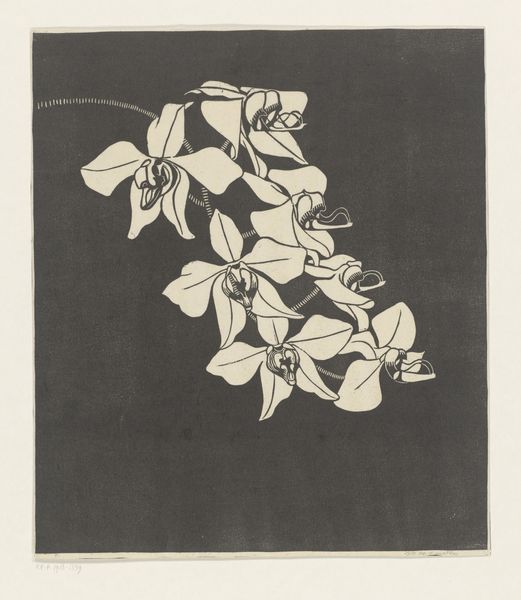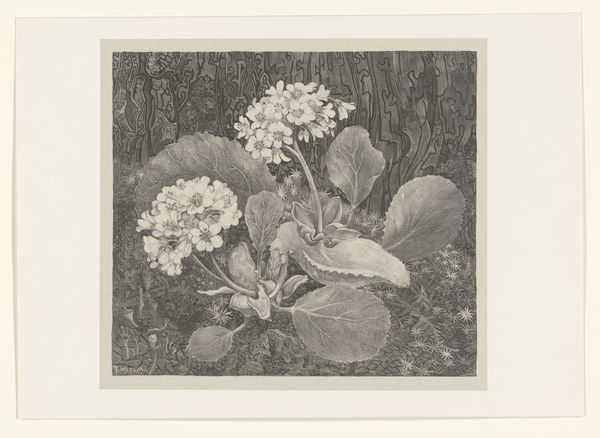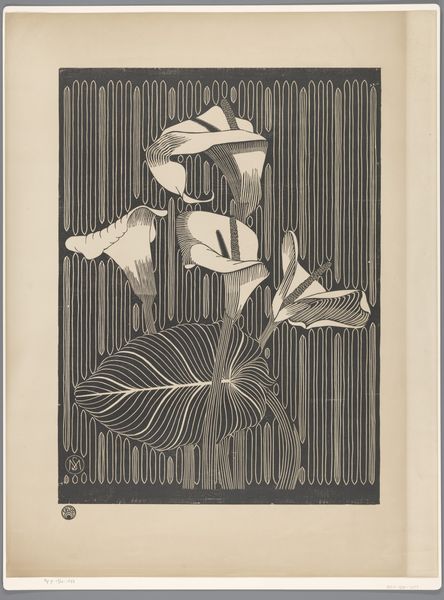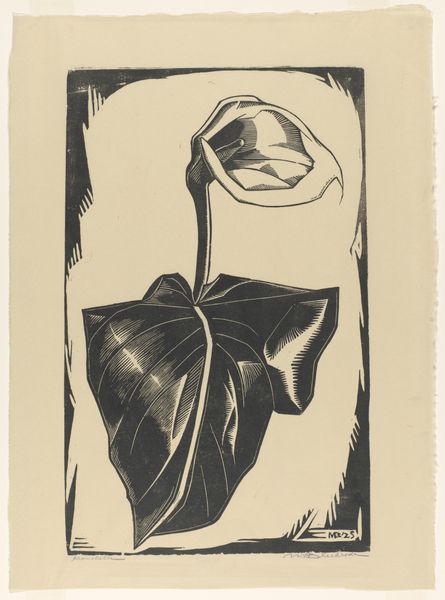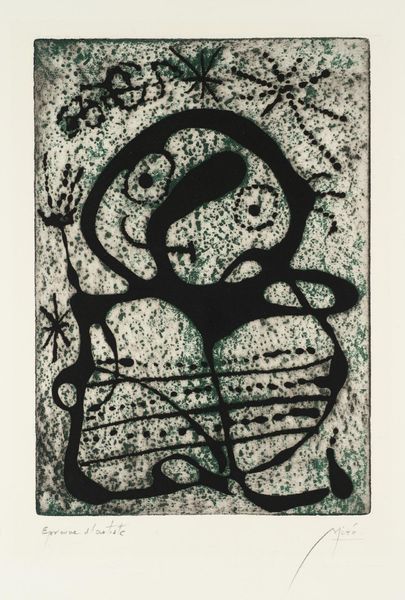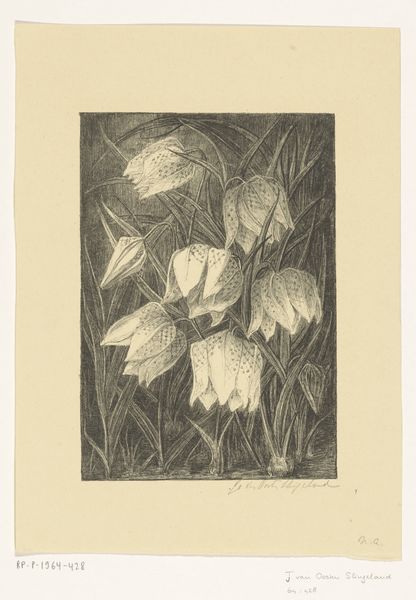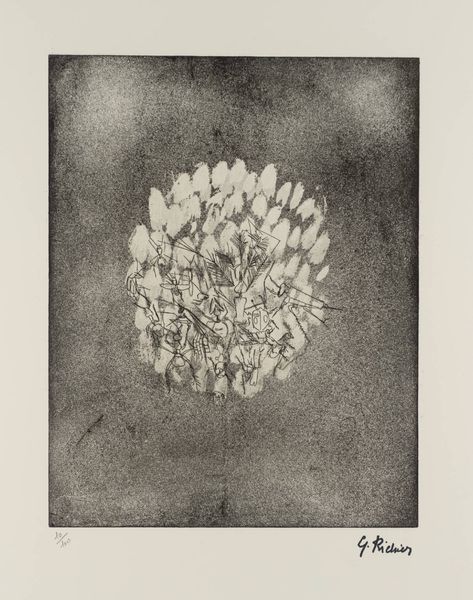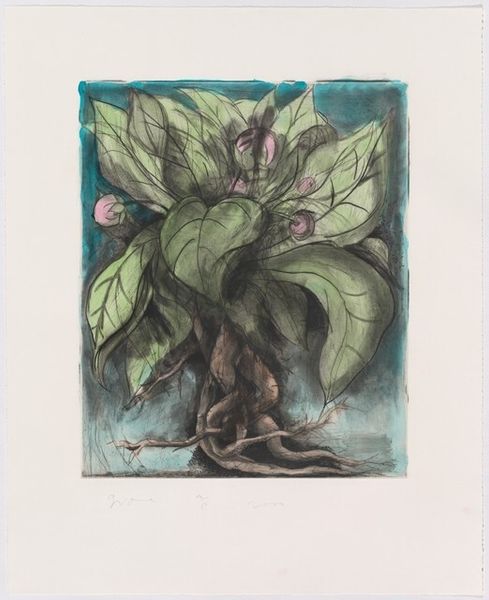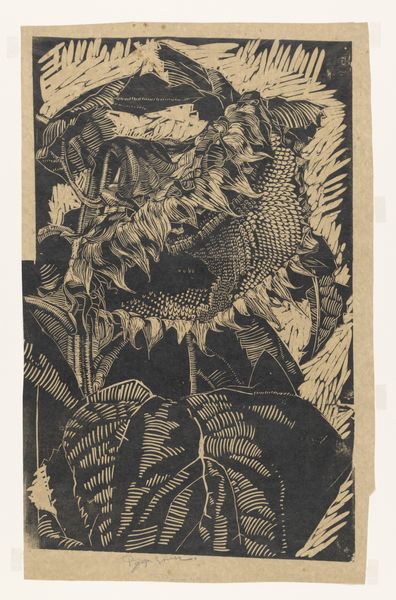
drawing, graphic-art, print, woodblock-print, woodcut
#
drawing
#
graphic-art
#
art-nouveau
# print
#
old engraving style
#
woodcut effect
#
linocut print
#
woodblock-print
#
geometric
#
woodcut
#
pen work
#
sketchbook drawing
#
monochrome
Dimensions: height 291 mm, width 227 mm
Copyright: Rijks Museum: Open Domain
Curator: Julie de Graag’s “Blad van een kastanje met vruchten”, or “Chestnut Leaf with Fruits,” made in 1919, is a striking example of a woodcut, showcasing her unique approach to graphic art. It's currently held here at the Rijksmuseum. Editor: Wow, it's so bold. The contrast between the black and white creates a really intense visual, almost vibrating off the page. It makes me think of old botanical illustrations but with a much more modern, graphic punch. Curator: Exactly! De Graag's piece falls neatly into the Art Nouveau movement, particularly because of her streamlined and ornamental depictions of natural forms, a theme quite recurrent for the era. I think what's interesting about it is its demonstration of a time when printmaking played a vital role in distributing and popularizing art. De Graag strategically employs this popular medium for rendering natural studies. Editor: I love how she simplifies the chestnut leaves and fruit. They are so instantly recognizable, yet stylized, giving it an almost decorative feel, like it could be repeated as a wallpaper design. It does capture the kind of beauty you find on a walk in autumn—I wonder if that feeling motivated the artist, or what role personal experiences played in these aesthetic decisions... Curator: That's perceptive! The stylized natural elements that de Graag employed directly reflect social ideals that idealized the concept of ‘nature’ as a retreat, or space of calm and inspiration for social progress, a visual metaphor, if you will, for renewal and growth. Editor: So, this chestnut leaf isn’t just a pretty picture; it represents broader societal themes of nature as restorative. Do you see its stark geometric pattern as perhaps mirroring an optimism rooted in hope? Curator: Yes, in part. But beyond hope, the clean precision achieved also emphasizes craft at a moment when the rise of industrialization was displacing artisanal practices, reflecting values espoused by certain factions of the Arts and Crafts movement and others who championed manual art forms during this moment in the Netherlands. Editor: Well, now I can't unsee the many socio-historical influences in something I initially interpreted as an image so beautifully bold! Thanks for helping unpack its many layers, Curator. Curator: It’s a pleasure! Hopefully our conversation will prompt the visitors here today to contemplate its context.
Comments
No comments
Be the first to comment and join the conversation on the ultimate creative platform.
